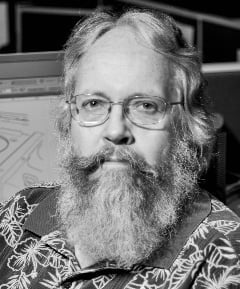Mysteries and Questions on CV History, Part 5

of the Crescenta Valley and loves local history. Reach him at
lawlerdad@yahoo.com.
Here are some more questions I’ve had from readers:
There are a couple of bridges crossing the 210 Freeway near Ocean View that appear to be unused. Are they abandoned, or slated for some kind of future construction?
There are actually three of what appear to be unused bridges over the 210 Freeway in a one-mile section between Rosemont Avenue and Angeles Crest Highway. They are covered flood control channels going over the freeway, like “square tubes” or flumes. They are substantial enough to appear to be street overpasses. The Pickens Flood Control Channel crosses the 210 between Rosemont and Briggs. There’s another to the east between Briggs and Ocean View that is the Hall-Beckley Flood Control Channel, and a third one further to the east between the 2 Freeway interchange and Memorial Park, which drains Winery Canyon. That one is especially interesting because you can actually walk across it! The La Cañada Trail Council opened it for public access as a section of their Cross Town Trail. You can access it by turning off Foothill onto Indiana Avenue. The entrance to the bridge is at the intersection of Indiana and Curran Street.
Are there any earthquake faults in CV?
Yes, there are two active faults that run through our valley in the same northwest/southeast orientation as our two mountain ranges run. The northernmost is the Mount Lukens Fault which runs across the front face of the San Gabriels, about halfway up to Mt. Lukens. The larger Sierra Madre Fault runs through our valley right where the San Gabriels rise up from the valley floor. Some of the landmarks that it runs directly through are JPL and Deukmejian Park, and both have sites where fault features are visible if you know where to look. It generally follows Markridge Avenue, perhaps a couple hundred yards to the north of it. It’s capable of quakes between 6 and 7 on the Richter Scale.
Another fault, not directly in the valley but that affects us nonetheless, is the Verdugo Fault on the Glendale side of the Verdugo Mountains. It runs along the southern base of the mountain, through the neighborhoods around Brand Library.
I live in an old house. Can it be declared a historic landmark?
Simple answer: If you live in the Glendale portion of CV, yes. If you live in unincorporated CV, no.
The City of Glendale has a thriving historic preservation program. If your house has a distinctive architectural style or has a famous or significant former resident, it may qualify to be listed as a historic property. It’s free to apply for your property to be listed on the Glendale Register of Historic Resources, and everything you need to find out about the program is on the city’s website. Once you apply, the yea or nay will be given by Glendale’s Historic Resources Commission. If your property is listed, it can be lucrative financially. The Mills Act, a state program, cuts historic homeowners’ property taxes in half. It’s transferable and thus adds value to the home on the real estate market.
The unincorporated area of CV is administered by L.A. County, which has no effective historic properties program.
Were there any Indians in the valley before the Spanish got here?
Almost certainly there would have been a village here, but no one knows exactly where that village would have been. The Spanish recorded several villages in the area, including Tujunga and Hahamongna on the other side of La Cañada. The village of Wikangna was somewhere around La Tuna Canyon, but whether on the Sun Valley side or the CV side, we don’t know. The local fire and flood dynamics have erased any trace of Wikangna, but artifacts from seasonal campsites have been found by locals in Pickens Canyon and Indian Springs. Rich Toyon, the local representative for the Tongva/Gabrialino tribe, has told me that the area around Verdugo Hills Golf Course is a likely village location, near oaks and a water source, off the flood plain, and on the trade path along the Foothills.
